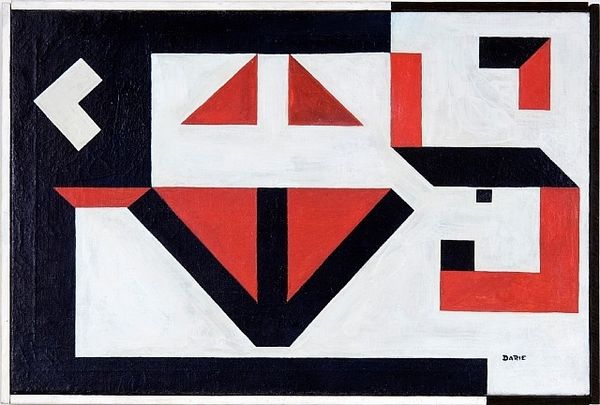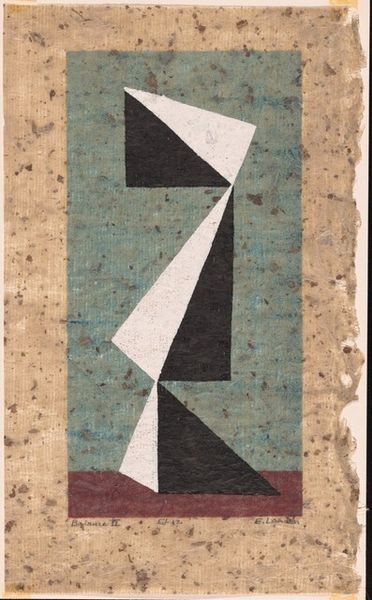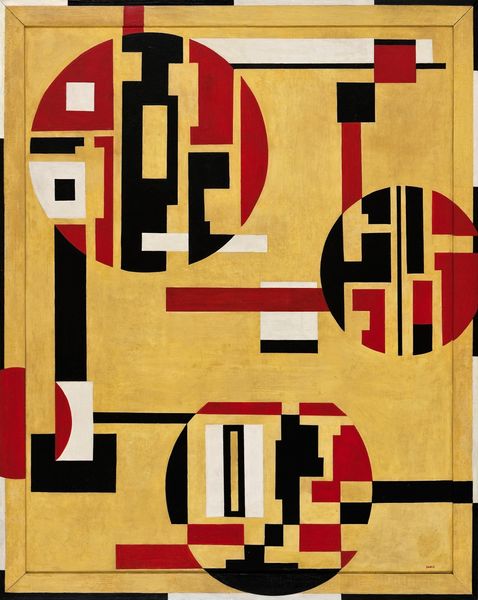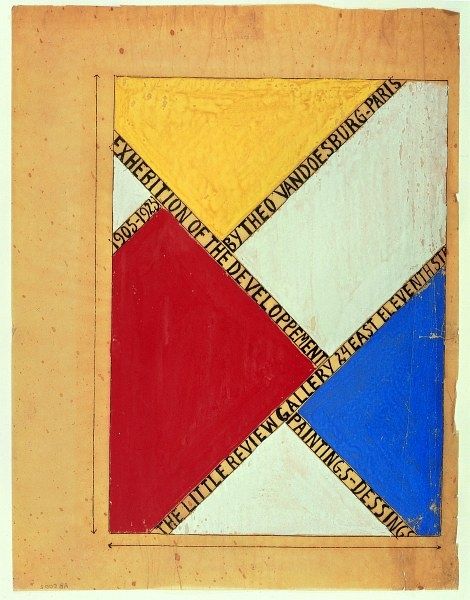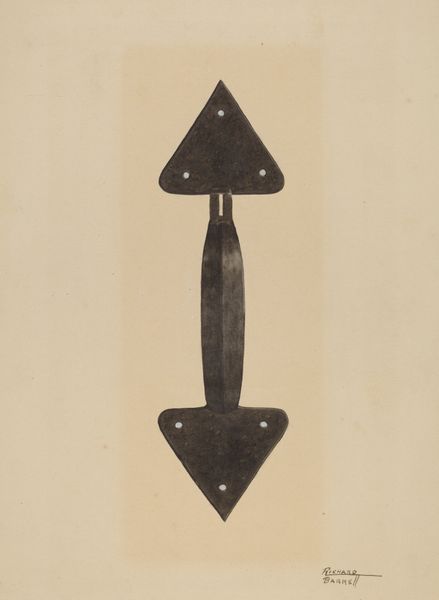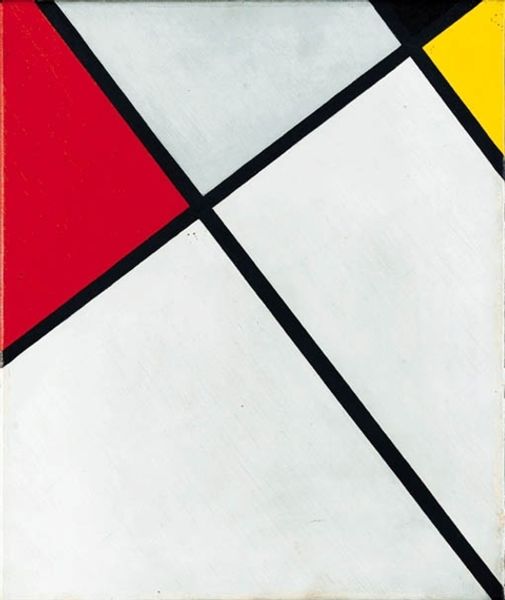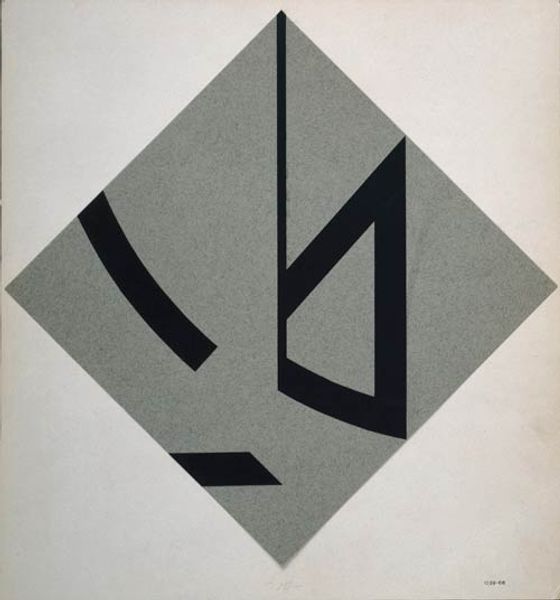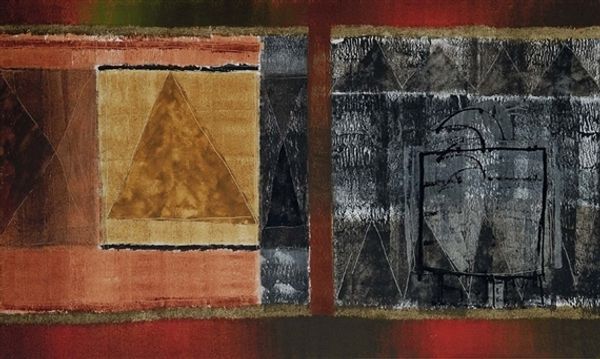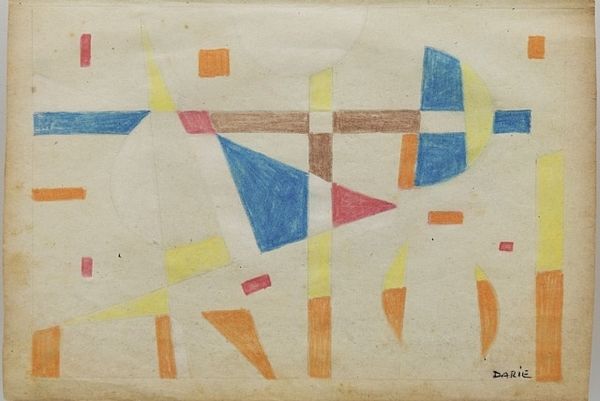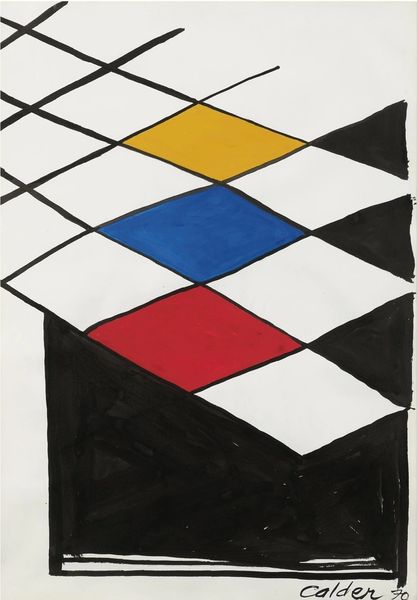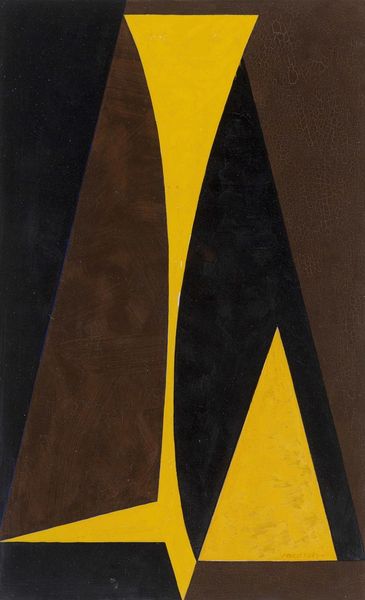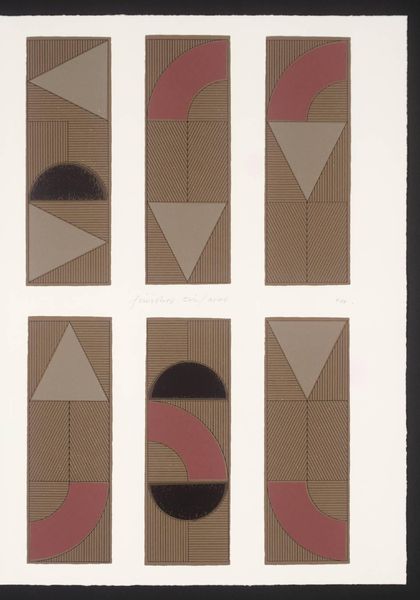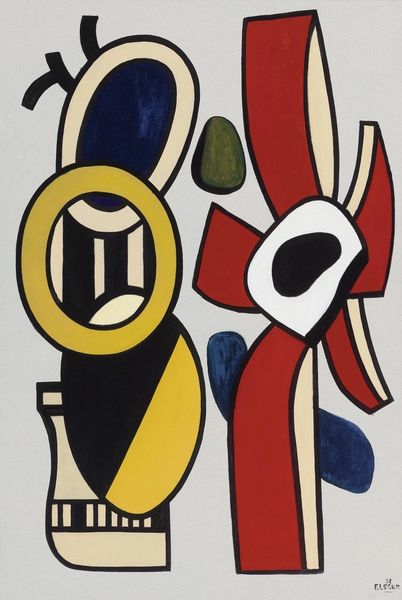
collage, painting, acrylic-paint
#
collage
#
painting
#
acrylic-paint
#
abstract
#
form
#
geometric
#
modernism
Copyright: Modern Artists: Artvee
Curator: So striking in its simplicity. Alexander Calder's "Baluster," created around 1945 using acrylic paint and collage on canvas. Editor: My immediate response is one of playful elegance, perhaps because of that clean, central black form, almost like an abstract vase, juxtaposed with the flat primary colors. It evokes a sense of mid-century modern design, like something from a stylish board game. Curator: Indeed, the aesthetic aligns strongly with post-war visual culture, where there was this desire for bold, new visual languages. Calder's work, especially during this period, breaks from the established traditions and connects with more accessible forms. His approach challenged the role of painting within art institutions and broader society, embracing industrial materials, colors, and processes, while inviting interaction. Editor: I find the black figure interesting. Its hourglass configuration is symmetrical and stable, yet also suggests tension and compression. Looking at the way it almost floats against the canvas, it's very much rooted in his lifelong engagement with balance and form. It reads a bit like an alchemical symbol, referencing the idea of distillation or transformation through purification. Curator: Precisely. There is certainly a sense of transformation, not just in its immediate visual appeal, but in how it represents Calder’s engagement with industry. It reflects Calder’s evolving attitude about his place in the world. This transition to painting after working mostly with sculpture offered new creative paths, aligning with his radical, open view of artistic expression and production. Editor: It speaks to the broader visual vocabulary, of the period too—that impulse to render form and volume in pure shape, recalling pre-Colombian art, totems. It speaks about reaching into deeper pools of cultural visual meaning to evoke universal understanding, something immediate and pure, and a re-emerging understanding of totemic forms after the horrors of World War II. Curator: So true. It reminds us of art’s powerful function during societal shifts, and how even an image such as this may serve as more than just visual form. Editor: Exactly. A beautiful distillation. Curator: I agree entirely. Thank you for the insight.
Comments
No comments
Be the first to comment and join the conversation on the ultimate creative platform.
